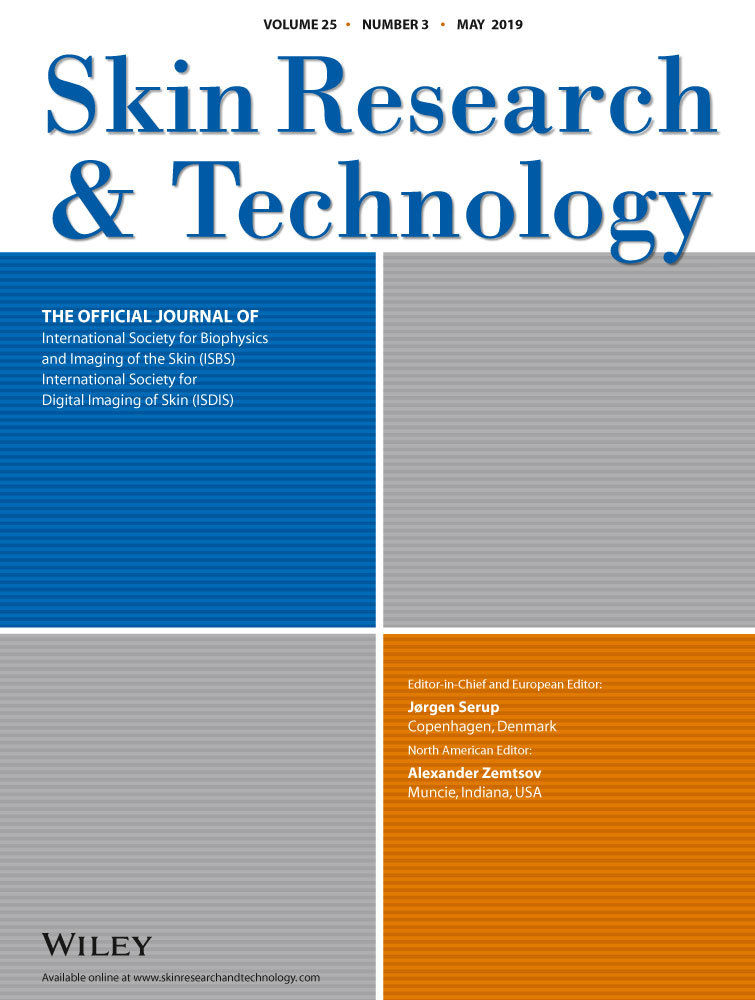Gender- and age-related differences in facial sebaceous glands in Asian skin, as observed by non-invasive analysis using three-dimensional ultrasound microscopy
Abstract
Background
While determining sebaceous gland morphology is useful in the treatment of skin disorders such as acne, a non-invasive assessment method has not been developed. Since age and gender affect sebum level, differences in sebaceous gland morphology according to these factors were investigated.
Methods
Facial skin was measured using a high-frequency three-dimensional ultrasound microscope. First, the ultrasound images were compared with skin sections. Next, we assessed sebaceous gland morphology. Images of sebaceous gland in the cheeks of young male, young female and elderly female subjects were obtained using ultrasound microscopy, and en face images were processed to measure the sebaceous gland area.
Results
In the ultrasound images, sebaceous glands and also thin collagen fibers, which surrounded the glands, could be detected as low-intensity regions. We called them sebaceous units. In young male subjects, the sebaceous unit areas 900-μm beneath the skin surface were larger than those at 700 μm. In contrast, depth-dependent differences in sebaceous unit area were not observed in young female subjects, indicating that males had cauliflower-shaped sebaceous glands while young females had somewhat more cylindrical and smaller sebaceous glands than the young males. Regarding age, the areas of sebaceous units at 900 μm were diminished and the depth of maximum area was shallower in elderly female subjects compared to young female subjects. Hence, sebaceous glands are considered to shrink with age.
Conclusion
Differences in facial sebaceous unit morphology between genders as well as by age groups could be observed using high-frequency ultrasound microscopy.




